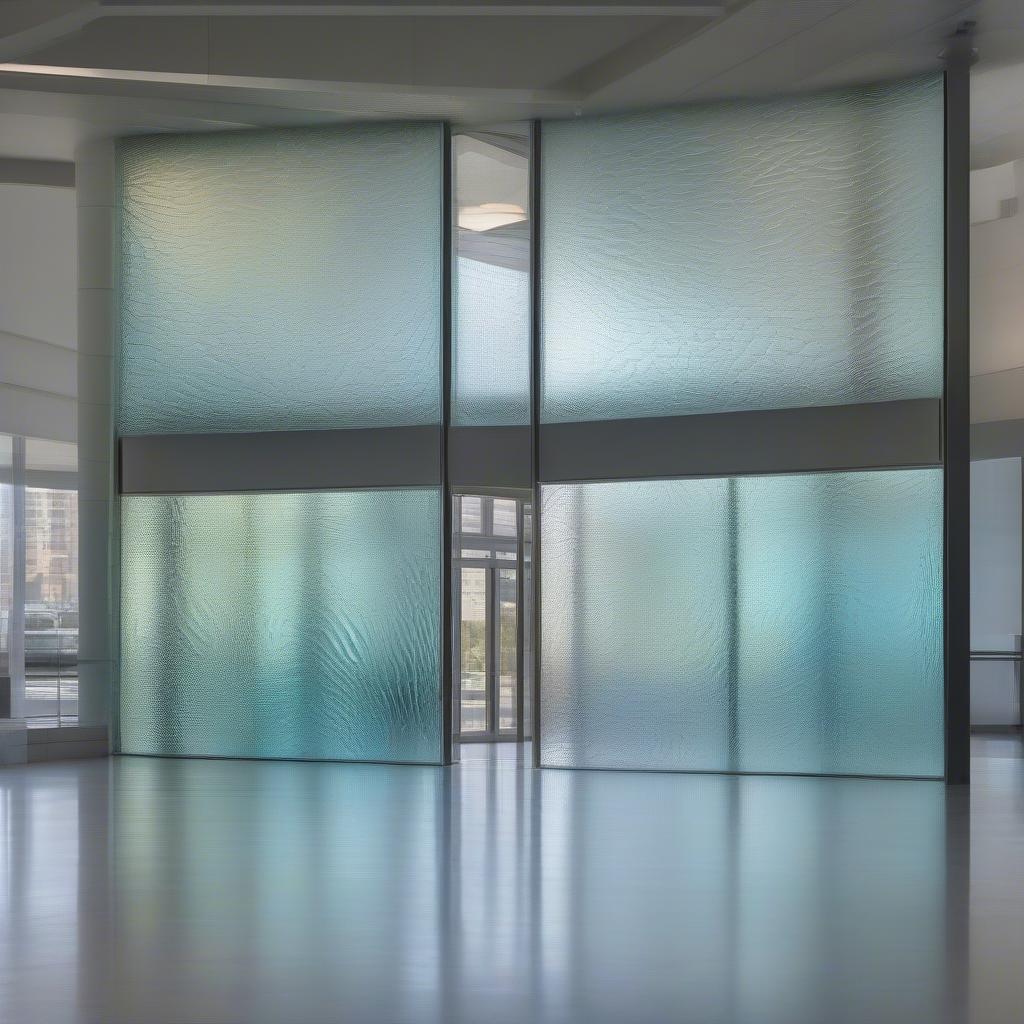Embossed Glass, with its intricate raised designs, adds a touch of vintage charm and sophistication to any space. From decorative bottles to architectural details, the unique texture and play of light make embossed glass a timeless choice. This article explores the beauty and versatility of embossed glass, delving into its history, production techniques, and various applications.
 Antique embossed glass bottles showcasing various patterns and textures.
Antique embossed glass bottles showcasing various patterns and textures.
Embossed glass, often found in antique glass spray bottle collections, has been cherished for centuries. The process of creating these textured surfaces involves pressing molten glass against a mold, imprinting the design. This technique allows for intricate details, from simple geometric patterns to elaborate floral motifs. The interplay of light and shadow created by the raised design adds depth and visual interest.
The History of Embossed Glass: From Ancient Origins to Modern Applications
The art of embossing glass dates back to ancient civilizations. Early examples of embossed glass can be traced to Roman and Egyptian artifacts. These early artisans utilized hand-carved molds to create unique designs on glass vessels and decorative objects. The technique gained popularity during the Victorian era, with the advent of mass-production methods.
Understanding the Embossing Process: A Delicate Dance of Heat and Pressure
How is embossed glass made? The modern process involves pressing molten glass against a pre-designed mold. This mold can be made from a variety of materials, including metal or plaster. The heat and pressure cause the glass to conform to the mold’s shape and texture, creating the embossed design. Once cooled, the glass retains the imprinted pattern, creating a permanent and captivating effect.
 Modern embossed glass production using metal molds and molten glass.
Modern embossed glass production using metal molds and molten glass.
Embossed Glass in the Modern World: More than just Decorative Bottles
While embossed glass bottles remain popular, the technique extends far beyond decorative items. Architects and interior designers incorporate embossed glass into windows, partitions, and even furniture. The unique texture adds visual interest and can diffuse light in beautiful ways. Embossed glass can also be found in small salad plates, adding a touch of elegance to tableware.
Caring for your Embossed Glass: Preserving its Beauty
Embossed glass, particularly embossed glass bottles, requires gentle care to preserve its delicate beauty. Avoid abrasive cleaners and harsh chemicals. Instead, opt for mild soap and warm water. A soft cloth or sponge is ideal for cleaning, preventing scratches to the embossed surface.
“Embossed glass offers a unique combination of functionality and artistry,” says renowned glass artisan, Amelia Hartwell. “It’s a testament to the enduring power of handcrafted design.”
 Intricate embossed glass window panels used in architectural design.
Intricate embossed glass window panels used in architectural design.
Conclusion: The Enduring Allure of Embossed Glass
Embossed glass, with its rich history and versatile applications, continues to captivate. Whether adorning an antique glass spray bottle or enhancing architectural details, embossed glass adds a touch of timeless elegance and artistry. Its enduring appeal lies in its ability to transform ordinary objects into works of art.
FAQ
- How is embossed glass made? It’s created by pressing molten glass into a mold.
- What are common uses for embossed glass? Bottles, windows, and decorative objects.
- How do I clean embossed glass? Use mild soap and warm water with a soft cloth.
- Is embossed glass expensive? The price varies depending on the complexity of the design and the size of the piece.
- Where can I buy embossed glass items? Antique shops, online retailers, and specialty glass stores.
- Can I create my own embossed glass? While possible, it requires specialized equipment and skill.
- Is embossed glass durable? It’s generally durable but can be chipped or scratched if not handled carefully.
Common Scenarios and Questions
Scenario: You found an antique embossed glass bottle at a flea market. Question: How can you identify its age and origin?
Scenario: You want to incorporate embossed glass into your home renovation. Question: What type of embossed glass is best suited for windows?
Further Exploration
Explore other related articles on our website for more information on glass art and decorative objects.
When you need assistance, please contact us at My Dinh, Hanoi, Vietnam or San Francisco, CA 94105, USA. We have a 24/7 customer service team.


